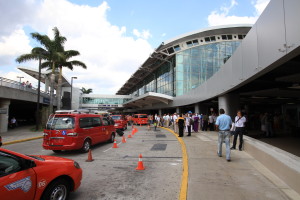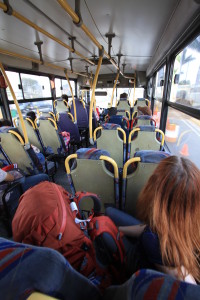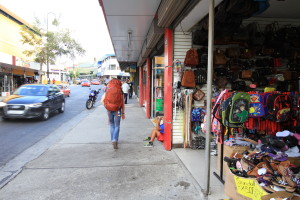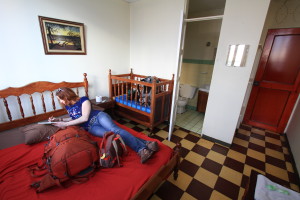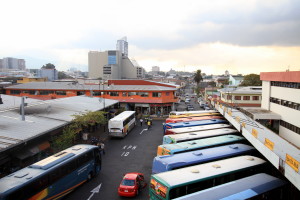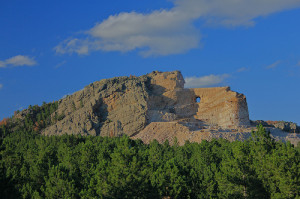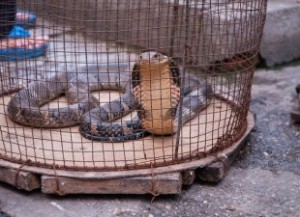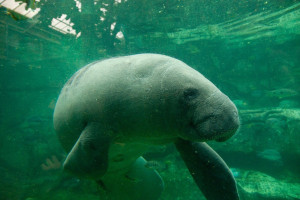I shutter to think about the number of days, hours, and years I’ve spent sitting at a desk and staring at a computer screen. While my current work situation enables me to work from pretty much wherever I please (Internet-depending, of course), my bank account still depends on my eyes to be fixed on the screen and my fingers to type. The difference, however, is that I’ve ditched the desk.
I hate desks. Sure, there’s plenty of ergonomic fancy designs that would probably remedy my persistently stiff neck, the idea of a desk reminds me of the conformity, rigidity, and structure I’m running away from.
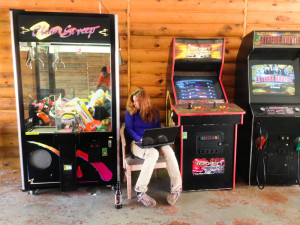
Happy Holiday Campground Arcade Room, Rapid City, SD
While traveling through the Black Hills of South Dakota, we stayed at an awesome campground with a lame name: Happy Holiday RV Resort in Rapid City, South Dakota. During this phase of our westward journey, the weather was inconsistent, yet tolerable.
Some days reached 60-degrees and campground-wide Wi-Fi made outdoor picnic table working possible. On rainy and cooler days, the campground’s arcade park was our refuge. Although most of the power outlets were broken and the couches reeked of stale smoke, the arcade room was warm, quiet, and just random enough to be creative in.
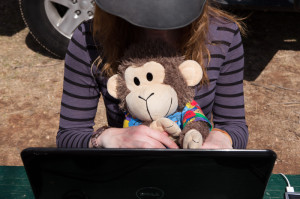
Happy Holiday campsite with monkey assistant
Working in the outdoors has always been a dream of mine, even if it still is on a stupid computer. Even when temperatures dipped into the 20’s and the wind gusts got crazy, I found myself incredibly willing to make it work. Pull on some more layers, plop on a hat, and duck under a pavilion to keep your laptop from getting destroyed by the downpour.
Once our westward journey reached Montana, the weather took a drastic turn for the worse. When initially planning this trip, I wondered why everything around Yellowstone National Park was closed in April. After seventeen days of dealing with this weather, I guess I finally understand why.
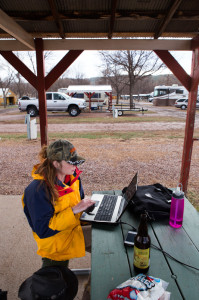
Happy Holiday pavilion in the rain
On one particularly unbearable day, we ventured into Bozeman, Montana to check out the city. After spending only a short amount in Bozeman, I quickly added it to my “I could maybe possibly see myself living here for awhile someday” list.
The Bozeman Public Library proved to be a great place to get some work done on a snowy Montana day. The Wi-Fi worked great, there was plenty of room to spread out, and the facility was nice and new.
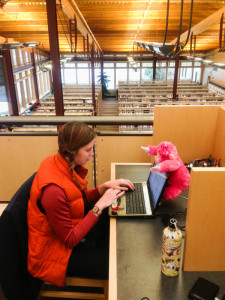
Bozeman Public Library with a pink monkey
Libraries are always preferable to coffee shops and restaurants with Wi-Fi for working because they eliminate that nagging obligation/temptation to buy something. When you’re traveling on a budget for a month, every unnecessary latte adds up. However, the libraries in some tiny towns have totally inconvenient hours.
For example, the library in Gardiner, Montana is only open on Tuesdays from 10am-5pm and 6-8pm and then Thursdays from 6-8pm. How do you promote literacy with only two weekdays of book access?

Tumbleweed Cafe, The Only Place with Internet in Gardiner, MT
Regardless, sometimes you just have to suck it up and pay for a couple of food items to get work done. The Tumbleweed Bookstore and Cafe was essentially the only place in all of Gardiner that had free Wi-Fi. Fortunately, coffee and tea only cost $1 there and Montana has no sales tax. That’s a small price to pay to get some freelance paychecks to roll in.
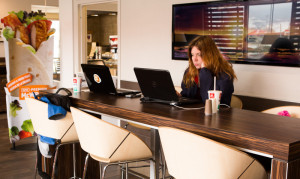
I hate myself as I’m writing this, but McDonald’s also has really reliable free Wi-Fi. I couldn’t resist buying a grilled chicken wrap and M&M McFlurry while working in the Livingston, Montana McDonald’s for over six hours on yet another snowy day. The staff never hassled us to leave either because they had fallen in love with my stuffed pink monkey. Thanks, Ginger.
Before setting out on this road trip, we tried to do our research about places to find Wi-Fi on the road. However, the results are sketchy and daily itineraries change. For backup, we invested in a Verizon 4G Jetpack, although the fees get ridiculous if we exceed the data usage plan.
I feel the need to create an “Encyclopedia of Road Trip Wi-Fi” with a list of places recommended for working on the road. Laundromats often have Wi-Fi also, such as Gardiner Laundry next to Yellowstone Gifts & Sweets. If you’re on the road for awhile, you probably have laundry to do anyway. If you don’t, fake it and fuss with a machine every once in awhile.
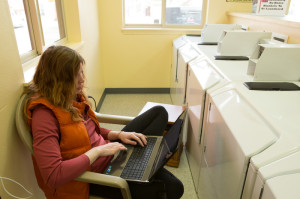
Gardiner Laundry, Closest Washing Station to Yellowstone
If you’re simply on vacation, avoid the unplug your devices, enjoy nature, and avoid these Wi-Fi spots at all costs. However, if your ability to eat and find shelter depends upon the Internet, keep knocking things off your to-do list so you can extend the road trip as long as possible. That’s what I’m doing!
























![IMG_0574[1]](http://www.alyssavnature.com/wp-content/uploads/2013/04/IMG_05741-1024x768.jpg)
![IMG_0554[1]](http://www.alyssavnature.com/wp-content/uploads/2013/04/IMG_05541-1024x768.jpg)
